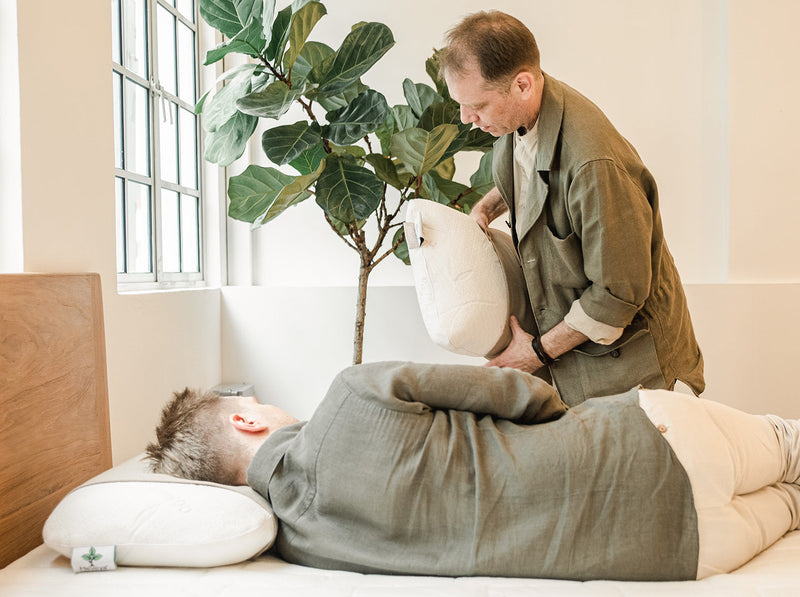In the past, people thought that sleep was an activity which was rated as passive and dormant. They used to think that once a person fall asleep, they went into a dormant state. This perception changed after the 1950s. It is now widely accepted that the brain remains active even after a person falls asleep. Through research, it has been established that sleep influences the way our body functions daily. We have yet to fully grasp the extent through which sleep affects these functions.
Our sleep is controlled by neurotransmitters chemicals which pass signals from the brain to the neurons and nerve cells. When we sleep, some activities take place within the brainstem, the area where the spinal cord and brain are joined. Norepinephrine and serotonin are neurotransmitters which are produced by the brainstem neurons and they help in maintaining brain activity as we sleep. The two neurotransmitters are also responsible for switching off signals that are transmitted to the brain when we are awake. According to researchers, the body produces Adenosine when we are awake and as this accumulates, we end up feeling drowsy. The reverse happens when we fall asleep because the body breaks it down.
Five stages of sleep
Sleep can be broken down into five stages, namely stages 1 to 4, and Rapid Eye Movement (REM) stage. Understanding these stages can help us to sleep better. The phases usually take place in a continuous cycle which starts again once it gets to the REM phase. The most dominant phase during sleep is the second stage. Our bodies spend up to 50% of the sleeping time in this phase. REM is the second longest period since it takes up to 20% of the sleep time. The rest of the stages share the 30% that remains. However, the trend is quite different when it comes to infants since they spend up to 50% of the sleep time in the REM phase.

Stage 1: Introduction to sleep
People in stage 1 phase are usually in a state of light sleep. They keep drifting in and out of sleep and can easily be awakened. The eyes have some muscle activity because they usually move slowly. When one wakes up from this phase, they are able to recall some visual images. In some cases, some individuals are also known to experience hypnic myoclonia, or muscle contractions which occur suddenly and causes one to feel like they are about to fall before this happens. We tend to experience the same feeling we get when we are startled.
Stage 2: Beginning of sleep
The second stage is characterized by the slowing down of the eye movement while the brain waves also slow down. When the brain activity in this stage is measured using electrodes, you will notice that the waves are smooth with a few rapid wave bursts that are also referred to as sleep spindles.
Stage 3: Slow wave sleep
By the time we get to stage 3, the brain waves are much slower and these are referred to as delta waves. They are combined with faster waves which are smaller in size.
Stage 4: Deep sleep
By the time one gets into stage 4, they are in a state of deep sleep. It is quite hard to wake them up and the waves produced are the delta waves. Stage 3 and 4 are basically considered to states of deep sleep. A look at the person sleeping shows that there is no muscle activity or eye movement. When you wake up someone from these two stages they are often confused and disoriented because they need to adjust. These two stages are so deep that some children wet their beds, sleep walk or even experience night terrors.
Stage 5: REM (Rapid Eye Movement) stage
The REM stage is the last stage in the cycle. During this stage, the eyes usually move fast in different directions while our breathing pattern becomes irregular. Our limbs may also become paralyzed though the feeling is temporary. Blood pressure also rises since the heart rate increases. This may lead to erections in males. People who are awoken from this stage may have bizarre tales or wild dreams.
Sleep cycle
A full cycle takes around 90 to 110 minutes. The first cycle is usually shorter with deep sleep taking the lion's share and the REM stage being shorter. As the night progresses, the deep sleep phase becomes shorter while the REM phase increases. As we approach the end of our sleep, it is mainly split between stages 1, 2 and the REM stages.

It is a noted pattern that people who are awoken a few minutes after they sleep rarely remember the activities that took place a few minutes before they slept. This explains why phone conversations that take place in the middle of the night may be forgotten or why some people rarely remember turning off their alarms.
Foods and medicines can affect our sleeping patterns
The foods and medicines we take have an effect on our sleeping patterns since they tend to affect the composition of the neurotransmitters which control the sleep. They will also determine whether we feel drowsy or alert depending on the signals our brains are transmitting. The use of antidepressants, caffeinated drinks or diet pills may cause insomnia because they stimulate the part of the brain that triggers alertness. Antidepressants and heavy smoking tend to suppress the REM stage of sleep and people who use these two may not be able to sleep for long. They end up sleeping for three to four hours because of nicotine withdrawal symptoms. Those who turn to alcohol to get sleep tend to have reduced REM and deep sleep stages. They end up having longer light sleep stages from which they awaken easily.
When one gets to the REM stage, the body loses that ability it normally has to regulate temperatures. That is why most people are easily awakened by changes in temperatures. When our REM stage gets disrupted, our normal sleep cycle gets disrupted. The body fails to revert to the normal cycle the next time we sleep. Our bodies go directly to the REM phase the next time we sleep to make up for lost time. This will continue till the body manages to catch up.
People who are under the influence of anaesthesia or even in a coma are said to be in a state of sleep. However, they do not produce the brain activity which is a characteristic of normal sleep. The brains waves are too slow to be detected.












